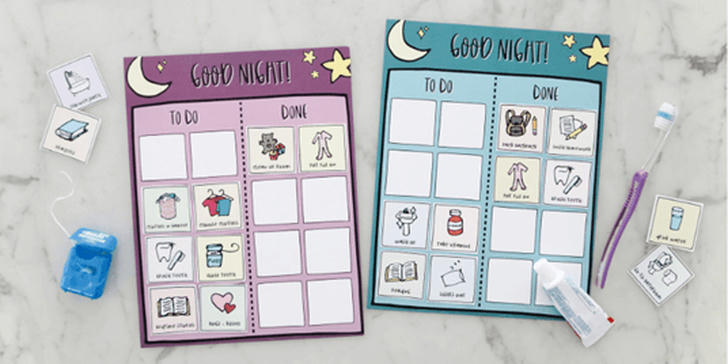8 Ways to Make Bedtime Easier for Kids
If you're a parent, you know the nightly challenge: put your kids to bed -- and stay there. It's not easy, but it's one of the most important things you can do for them.
1. Go to bed at the same time

Although small children can't tell the time, their bodies can. Going to bed at the same time each night helps them get into sleep habits both physically and mentally. It's tempting to change your schedule on weekends or during the summer, but try to keep your bedtime consistent. Going to bed late can make it difficult for children to get back to their normal routines.
2. Turn off the TV and other screens

Don't use TV or other electronic devices to help your child relax before bed. Shows with violence, suspense, drama or conflict can make it difficult for them to calm down and fall asleep. Terrible performances can even cause nightmares. But even calm content can interfere with sleep. The light from a screen close to bedtime can trick the body into thinking it's still daytime. Quiet off-screen activities are better, such as reading, painting, or listening to quiet music.
3. Enter the routine

A three to four step bedtime routine can help your child relax and get ready for bed. A typical person might be showering, wearing pajamas, brushing teeth, and reading. For teens, you might want to sit down and chat about the day. Just keeping quiet, consistent habits can keep things simple.
4. Set an early bedtime

Parents may not realize that going to bed early can lead to easier bedtimes. When children are too tired, it is difficult for them to settle down and fall asleep. Some experts recommend that children go to bed between 7:30 and 8:30 in elementary school.
5. Make a bedtime chart

For preschoolers, bedtime charts allow them to see all the steps they'll be taking before going to bed. For example, draw a picture of your bathtub, your pajamas, and the exact number of books you read each night. This will help to request another story at the last minute - you just point to the chart and show them the number of books on it.
6. One-way movement

When your child completes their bedtime routine, make sure all activities move to one place - their bedroom. Don't start going upstairs to take a shower, then go down to the kitchen for a snack, then go back to their room to put on pajamas, and then go to your room to read. It is important that all the movements get them into their room at the end.
7. Say no to wake-up calls

If your child calls after bed and asks for something else - like a drink or a hug - give them one. If they ask again, try a firm "no," or simply ignore the request and silently put them back to bed. Be consistent and patient. You may need to do it a few times. But once they know you're serious, the request may stop.
8. Create a Sleep Haven

Make your child's bedroom a comfortable sleeping place. Keep the temperature cool enough in summer and warm enough in winter. To control the light, use curtains or blinds that darken the room. If it makes them feel better, a soft night light will do. A good pillow will help them feel comfortable. And make sure their beds aren't crowded with dozens of stuffed animals or toys.

